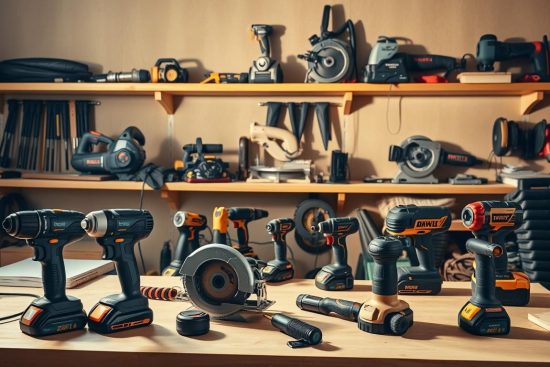Whether your kitchen area is cozy or spacious, creating an efficient system for storing essentials can transform how you cook and live. A well-planned setup reduces clutter, saves time, and makes meal prep feel effortless. Let’s explore how smart solutions like clear containers and labels can turn even the tiniest nook into a functional hub.

Imagine opening cabinets to instantly spot ingredients instead of digging through mismatched boxes. Transparent bins and jars let you see supplies at a glance, while labels ensure everything stays in its place. Real-life examples show how families cut grocery trips by 30% simply by knowing what they already have.
Optimizing your setup isn’t just about tidiness—it’s about saving hours each week. Streamlined spaces mean fewer duplicates, less expired food, and quicker decisions during busy nights. Plus, an orderly approach helps you shop smarter, buy only what’s needed, and enjoy stress-free cooking.
In this guide, you’ll discover step-by-step strategies to revamp your shelves, clever hacks for tight corners, and tips to maintain your system long-term. Ready to unlock a kitchen that works as hard as you do? Let’s dive in!
Key Takeaways
- Smart storage systems save time and reduce stress during meal prep.
- Clear containers help you quickly identify ingredients and track supplies.
- Labels prevent clutter by ensuring items return to their designated spots.
- Efficient setups minimize food waste and unnecessary purchases.
- Even small areas can become highly functional with intentional design.
Understanding Your Pantry Space
The secret to a functional kitchen lies in smart space evaluation. Start by grabbing a notepad and measuring tape—this hands-on approach helps uncover hidden opportunities in your cabinets and shelves. Pro tip: Open every door and drawer to visualize access points, then note areas that feel cramped or underused.
Assessing Available Storage and Layout
Begin with a shelf-by-shelf inspection. Can you easily reach everyday items? Do spices hide behind cereal boxes? Here’s a quick reference table to diagnose common issues:
| Problem Area | Signs of Trouble | Fix |
|---|---|---|
| Upper Shelves | Dusty appliances or expired goods | Install pull-down racks |
| Deep Cabinets | Lost items in the back | Add sliding baskets |
| Narrow Corners | Unused vertical space | Use L-shaped shelf inserts |
Identifying Clutter and Inefficient Zones
Clutter often hides in plain sight. Look for duplicate condiments, expired baking mixes, or rarely used gadgets hogging prime real estate. One family discovered three half-used pasta boxes buried in their cabinets—a classic sign of disarray.
Focus on zones that slow you down during cooking. Is your olive oil always three steps away from the stove? Could snack containers fit better near lunch prep areas? Small tweaks like grouping breakfast items together can shave minutes off morning routines.
Effective Pantry Organization Strategies (pantry organization)
Creating a system that works begins with understanding your daily rhythm. What items do you grab first? Where do you spend the most time prepping meals? Answering these questions helps craft a layout that flows with your routine, not against it.
Designing a Layout That Works Harder
Start by dividing your space into zones based on use. Keep breakfast staples near coffee mugs, or group baking supplies together. Here’s a quick guide to common zones and fixes:
| Zone | Challenge | Solution |
|---|---|---|
| Snack Area | Kids rummaging through boxes | Clear bins at eye level |
| Cooking Essentials | Oils and spices scattered | Turntable near stove |
| Bulk Storage | Hard-to-reach back shelves | Slide-out baskets |
Creating Achievable Decluttering Goals
Tackle one shelf per weekend instead of overwhelming whole areas. Try this approach:
- Pull everything out
- Toss expired items (check those spice jars!)
- Group remaining goods by category
Repurpose household items for smart solutions. Ice cube trays corral small packets, while magazine holders store foil rolls vertically. One homeowner cut cereal box clutter by 40% using dollar-store baskets.
Remember, progress beats perfection. Small changes create big wins—like finding that soup mix before it expires. A thoughtful setup doesn’t just save time; it brings calm to your busiest moments.
Utilizing Clear Containers & Labeling
Visibility transforms chaos into control. Transparent storage solutions let you spot oatmeal or olive oil in seconds—no more guessing games with opaque boxes. This approach isn’t just pretty; it’s practical for tracking supplies and cutting food waste.
Why Transparency Wins
Clear bins and glass jars offer three game-changing benefits:
- Instant inventory checks: See when rice levels dip or snack stocks need refilling
- Longer freshness: Airtight containers keep bugs out and crunch in
- Space efficiency: Uniform shapes stack neatly, unlike bulky original packaging
One baker friend reduced flour spills by 80% after switching to wide-mouth jars. “I finally remember I have cornstarch before buying more,” she laughs.
Label Like a Pro (No Craft Skills Needed)
Grab these household items for smart tags:
- Painter’s tape + Sharpie: Write directly on container lids
- Chalkboard stickers: Update contents as needed
- Reusable vinyl labels: Survive fridge-to-shelf moves
My grandma’s hack? Save empty pasta sauce jars, soak off labels, and use grease pencils to mark contents. Bonus: They’re freezer-safe for batch meals.
Start small—transfer just your baking supplies first. Mix new containers with repurposed ones (hello, coffee canisters!) for budget-friendly charm. Within weeks, you’ll wonder how you ever cooked without this crystal-clear system.
Maximizing Vertical and Hidden Storage
Unused airspace might be your kitchen’s secret weapon. Look up—those empty inches above cereal boxes or between shelves hold untapped potential. With smart tools and a dash of creativity, you can triple usable space without remodeling.
Rise Above Clutter With Shelf Boosters
Shelf risers turn dead zones into active storage. Place them under:
- Spice collections (keep duplicates visible)
- Snack bags in kids’ reach
- Baking sheets standing vertically
One study found these tools increase shelf capacity by 57%. Stacking bins work similarly for bulk goods—store rice below, pasta on top, with handles for easy access.
| Problem | Solution | Benefit |
|---|---|---|
| Tall gaps between shelves | Adjustable acrylic risers | Double-layer spices |
| Wasted door interiors | Over-door racks | Hold 15+ seasoning jars |
| Cluttered counter corners | Wall-mounted rails + hooks | Hang utensils or measuring cups |
Hidden Gems in Forgotten Spaces
Door racks aren’t just for shoes. Try these hacks:
- Mount a narrow basket inside cabinet doors for tea bags
- Use adhesive hooks under shelves to hang lightweight container lids
- Install pull-out drawer inserts in deep cabinets
For creative storage solutions, consider magnetic strips for spice tins or tiered baskets in corners. A client stored 32 seasoning jars on two tension rods—no drilling required!
Vertical storage isn’t about stuffing more in. It’s creating logical homes where every item has breathing room. Start with one trouble spot, like that chaotic drawer of packets, and watch efficiency soar.
Smart Solutions for Small Pantries
Think beyond store-bought organizers—your home already holds tools to conquer cramped spaces. A Brooklyn food blogger transformed her 4-foot-wide nook using a hanging shoe organizer for snack packs and repurposed cookie tins for rice storage. “It’s about working smarter, not buying more,” she notes.
Everyday Items, Extraordinary Results
Try these swaps using what you own:
- Ice cube trays → spice packet dividers
- Mug trees → vertical snack bag displays
- Empty candle jars → bulk grocery containers
One parent stored 15lbs of dry food in washed coffee canisters labeled with chalk paint. “My kids now grab granola bars without avalanches,” they shared on Instagram.
Zone Defense for Tiny Spaces
Create dedicated areas using color codes or shelf levels:
| Zone | Household Hack | Holds |
|---|---|---|
| Snack Station | Tension rod + S-hooks | Chips, fruit pouches |
| Rice/Grains | Stackable pet food bins | Quinoa, basmati |
| Breakfast Corner | Repurposed dish rack | Oatmeal packets, tea |
For more smart storage solutions, explore vertical dividers from old picture frames. A DIY enthusiast built sliding grocery shelves using drawer rails—perfect for accessing back-of-shelf items like canned food.
Remember: Small spaces thrive on specificity. Designate one basket for “emergency snacks” or use adhesive clips to hang measuring cups inside doors. With clever reuse, even a closet-sized area becomes a food management powerhouse.
Modern Storage Options and Tools
Revolutionize your kitchen efficiency with clever tools designed for modern living. Forget digging through cluttered shelves—today’s solutions blend smart design with practical access. From rotating spice hubs to mobile bins, these upgrades turn everyday tasks into seamless experiences.

Turntables: Your New Best Friend for Sauces
Lazy Susans aren’t just for dinner tables anymore. A 12-inch turntable can hold 15+ spice jars, letting you spin to any bottle in seconds. One home chef reported cutting prep time by half after organizing oils and vinegars this way. Perfect for deep cabinets where items often get lost.
Mobility Meets Functionality
Wheeled bins glide smoothly on shelves, ideal for heavy canned goods or bulk snacks. Mesh drawers add breathability for potatoes or onions while keeping them visible. Check out these popular options:
| Tool | Best For | Capacity |
|---|---|---|
| 360° Turntable | Condiments, baking supplies | 20 lbs |
| Rolling Bin | Soup cans, pet food | 30+ items |
| Vented Drawer | Produce, root vegetables | 15 lbs |
Many storage containers now feature modular designs—stack them vertically or nest when empty. A recent Amazon review highlighted wheeled units that transformed a cramped corner: “Finally accessed my tomato paste without yoga moves!”
When you shop for these tools, prioritize durable plastics or stainless steel. Look for airtight seals on food storage units to maintain freshness. With thoughtful choices, your kitchen becomes a model of modern efficiency—one spin or slide at a time.
Enhancing Functionality with Multi-Purpose Fixtures
Your kitchen’s most underrated storage hero might be staring you in the face every day—the humble door. With simple upgrades, these overlooked surfaces become dynamic tools for accessibility and style.
Door Organizers: Small Space Superstars
Over-the-door racks turn vertical gaps into storage hubs. Ideal for spices, seasoning packets, or snack bars, they keep essentials visible and within reach. A Thee Tailored Life reader shared: “I fit 42 tea bags in a mesh organizer—no more digging through drawers!”
| Organizer Type | Best For | Capacity |
|---|---|---|
| Mesh Pockets | Snack packs, drink mixes | 20+ items |
| Wire Baskets | Canned goods, jars | 15 lbs |
| Clear Pouches | Spices, tea bags | 30+ packets |
Sliding Doors: Space-Saving Style
Replace swinging doors with sleek sliders to reclaim up to 10 square feet. Inspired By Charm showcased a farmhouse-style pantry using frosted glass panels—they prevent collisions in tight aisles while letting light filter through. Perfect for narrow spaces near your grocery store haul drop zone!
Repurpose like a pro: Turn plastic bins into modular units with these hacks:
- Stackable crates → vertical cereal towers
- Drawer dividers → sauce packet sorters
- Color-coded tubs → baking supply stations
These solutions prove you don’t need custom cabinets for smart pantry storage. A $5 over-the-door rack holds as much as a $200 shelf—and makes post-grocery store unloading twice as fast!
Seasonal and Appliance Storage Ideas
As seasons change, so do your storage needs—adapt your space with solutions that blend function and flair. Rotate summer grilling sauce packets to front-row spots while winter baking supplies take a backseat. This approach keeps essentials accessible while maintaining visual harmony.

Freshness Meets Style in Glass Jars
Decanting bulk items into uniform jars does more than prevent stale crackers. It creates a cohesive look that adapts to any design. Try these tips:
- Use wide-mouth jars for produce like lentils or quinoa
- Label tea tins with chalk markers for easy updates
- Store holiday-themed sauce packets in clear containers
A Portland food stylist shares: “Clients love how my autumn spice jars double as countertop decor.”
Appliance Homes That Hide in Plain Sight
Small gadgets often hog counter space. Built-in solutions solve this:
| Appliance | Storage Hack | Benefit |
|---|---|---|
| Blender | Pull-out shelf near outlets | No lifting heavy units |
| Air Fryer | Slide-under cabinet tray | Hidden but accessible |
| Coffee Grinder | Vertical niche beside tea station | Morning routine flow |
Group seasonal packets by purpose—think summer drink mixes or winter soup starters. For more pantry organization ideas, explore dedicated zones for produce storage or sauce varieties. A Brooklyn baker stores holiday cookie cutters in labeled jars above her mixer—proof that smart systems work in any kitchen era.
Time-Saving Pantry Hacks and Maintenance Tips
Smart kitchen routines start with habits that outlast spring cleaning frenzies. A Minnesota mom of three shared how weekly 10-minute sweeps keep her shelves functional: “I check expiration dates while unloading groceries—no more mystery cans!”
Inventory Systems That Work While You Sleep
Digital tools like inventory apps snap photos of your goods and send reminders before items expire. Try this low-tech alternative: Stick a whiteboard on the door to track staple quantities. One study showed families reduced waste by 40% using this method.
Schedule decluttering sessions like clockwork:
| Frequency | Focus Area | Time Saved |
|---|---|---|
| Weekly | Expired goods | 15 minutes |
| Monthly | Duplicate items | 30 minutes |
| Seasonally | Bulk restocks | 1 hour+ |
Reusable silicone bags simplify storage for things like nuts or dried fruit. They stack flat when empty and survive dishwasher cycles. As organizer Lisa Thompson advises: “Treat maintenance like dental cleanings—small, regular efforts prevent major headaches.”
Color-code your most-used goods with washi tape on lids. Blue for breakfast items, red for dinner staples. This visual cue helps kids put things back correctly, cutting cleanup time by half in one Texas household.
Keep a donate bin nearby for excess things—those impulse buys from the bags-aisle finds. Drop it off during school runs to maintain momentum. Remember: Sustainable systems grow from realistic routines, not perfection.
Conclusion
Transforming cluttered spaces into streamlined hubs begins with smart choices. Using glass containers creates visibility for everyday items, while modern organizers turn chaotic shelves into orderly systems. These methods help you spot ingredients instantly and maintain tidy zones effortlessly.
Key strategies like labeling and vertical storage maximize every inch. Rotating turntables and stackable products ensure rarely used goods don’t get buried. A well-planned setup lets you store smarter—not harder—by grouping similar items and eliminating duplicates.
Start small: reorganize one shelf this weekend using spare jars or affordable bins. You’ll quickly notice less wasted food and faster meal prep. Imagine opening cabinets to find exactly what you need—no digging required!
Ready to enjoy a kitchen that works as hard as you do? Grab those clear containers, sort your spices, and watch stress melt away with each organized shelf. Your future self will thank you every time dinner comes together smoothly.


